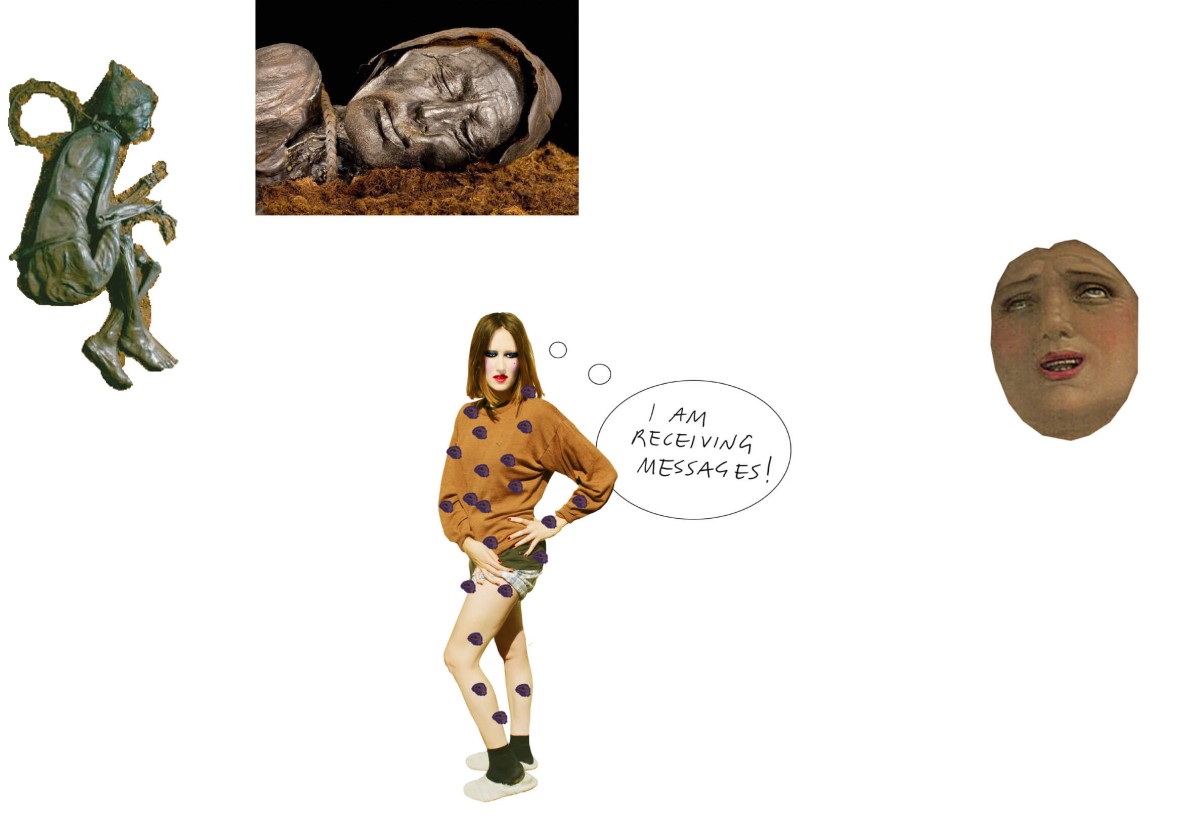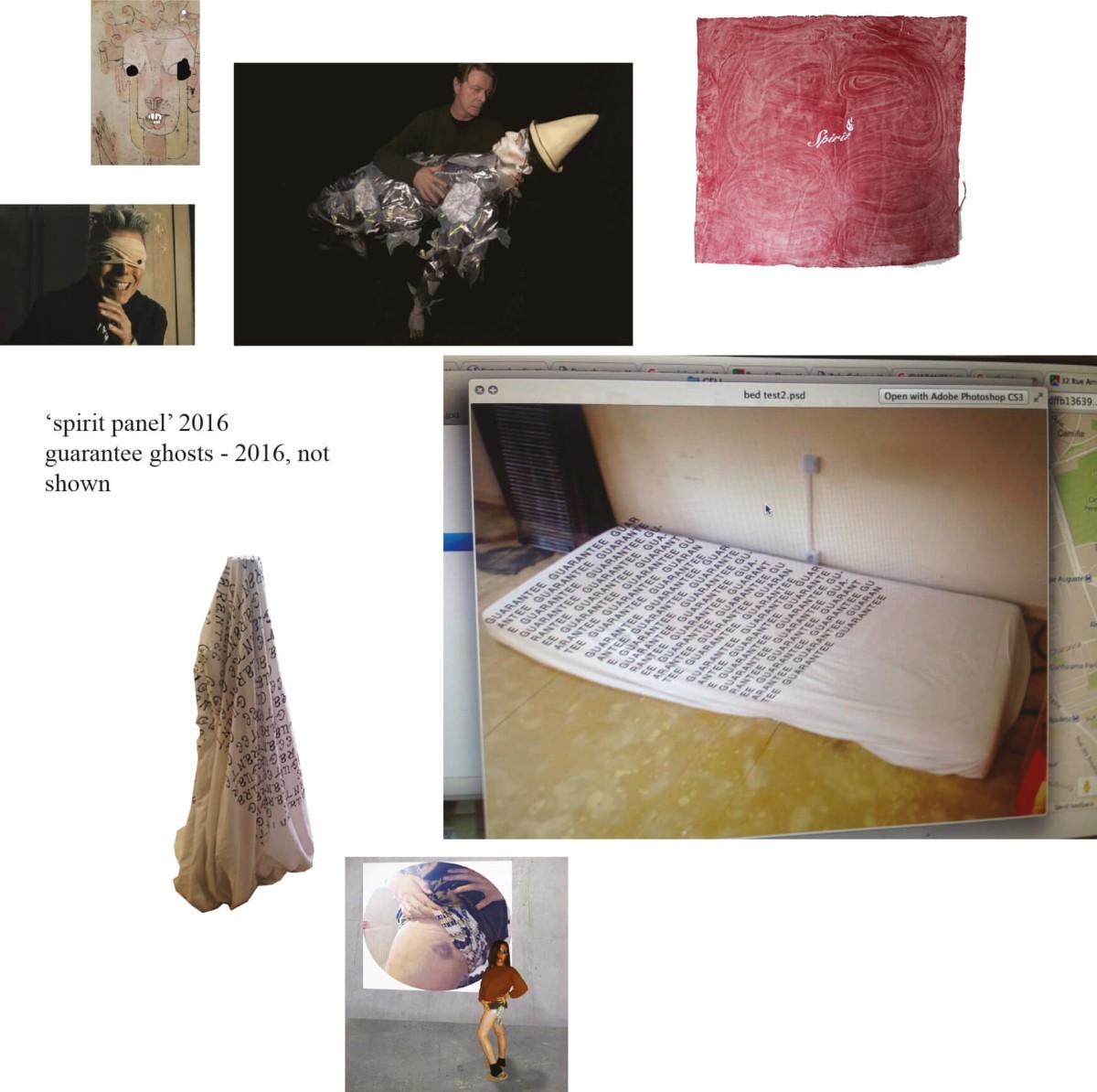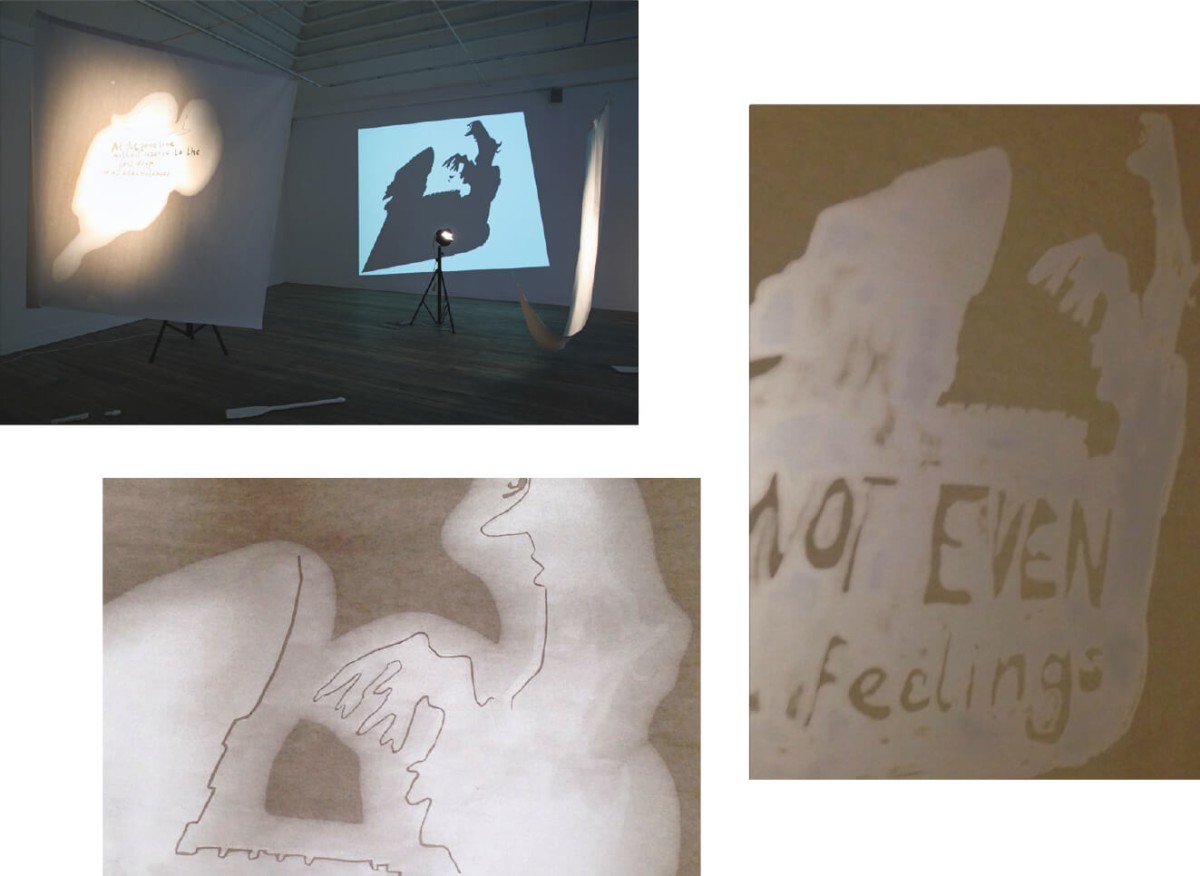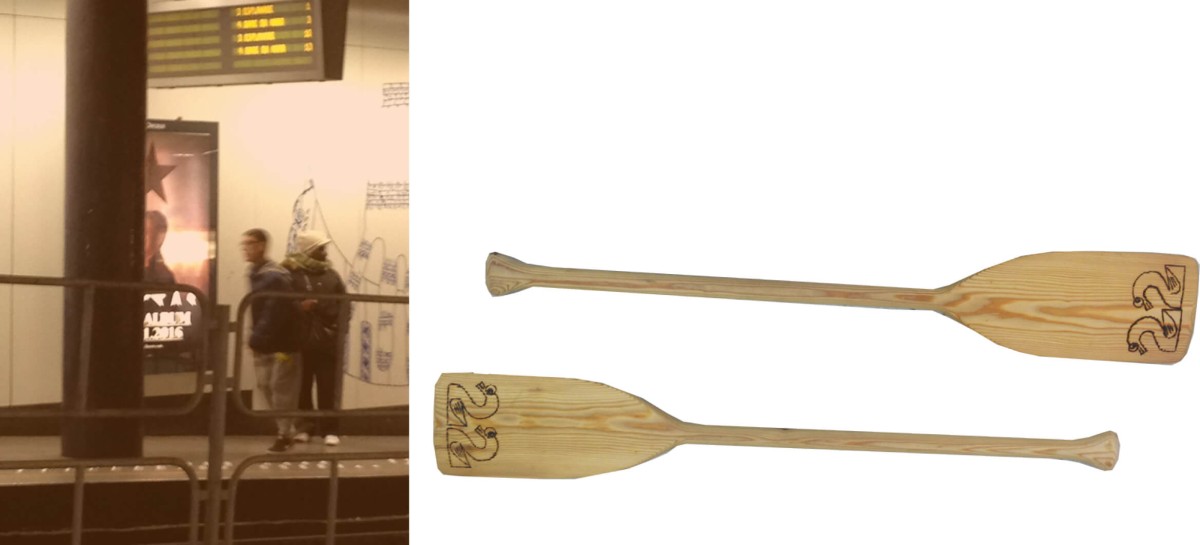Conversation with Camilla Wills
“True, you’d give a bruise almost sadistic refinement. And call it an idea.”
Camille Roy, “Sometimes Dead is Better, A Comedy in Five Unnatural Acts”, Baby Doc magazine, 2016.
Céline Kopp : What is a bruise to you ?
Camilla Wills : I looked back to when they first appeared in my work, in prints and videos, and the notes I was making around 2010. I think the idea of a bruise simply begun as the moment of intensity or compression within a work, or a body of research. A bruise is compressed like a thought, in the head. A leak, behaving like a disruption on the interface. I was born blue actually because of an accident before the birth. That’s what I liked about bruises that sometimes you can’t know where they came from. They can mess around with the rhythms of genealogy and normal order. But that detail feels quite decorative. A bruise is an involuntary response to a specific violence. Parts of the body that don’t normally talk are forced into transmission. I think sites and people are composed by the way they are ‘messaging’. Messaging in the perceptive non-textual sense, more ‘making contact’, ghosts and forces. A bruise can bring out the forensic in the viewer. Because the mark is two-way, reversible. Other words that you could interchange for bruise are things like keyhole, exorcism, fingerprint, angel, void, press release, hostess.
This week I was in Silkeborg and saw the Tollund Man and thought about bruises again. Tollund Man is a hanged man from 4th century BC, buried and preserved by the pressure and climate of a bog. He was clean-shaven for sacrifice, so has preserved stubble that grew a little after he died. And the noose still looped around his neck. As well as the impression or abrasion of that rope visible on the back of his neck. They found different seeds in his stomach. Some cultivated, some natural. He’s like a storage of information, a piece of evidence. But that hyper detail and info (stream of consciousness) that flows from him crossed with his essential silence, the frozen expression of honesty, gives you a kind of adrenaline rush.
CK : One of the things that strikes me is that you jump straight into using the word interface. A bruise being therefore both a communication device and something that enables a disruption in the long discussed conception of the skin as a boundary between the inside and the outside, the world and the self. In terms of vocabulary it brings to mind the idea of transcending the skin that has generated so many fantasies linked with cyberspace over the recent decades. But I am not sure this is where your work lays and maybe I am already digressing? Also, when you speak about “compression” you obviously focus on the body surface, the reduction of volume towards a membrane. It seems to me particularly important because it underlines the fact that both the skin and the brain are formed from the same membrane in the embryo, therefore both are surfaces. Profundity then paradoxically appears to be in the surface.
CW : The thing that strikes me directly is that you changed colours to blue! I assumed the word interface meant the boundary between two systems, but also came from the same root as ‘interred’ ‘terre’, earth burial. It’s never been my way to have an overview on anything! (in terms of analyzing the digital conception of skin.) I recently read the ‘Fuck Seth Price’ novel. It’s good someone’s high up with that overview, but I’m happier lost (harvesting) down on the surface. Actually he doesn’t even want to be in the penthouse so to speak. I remember this passage he wrote about the printed image as skin, and the choices you have as an artist about how to use this. Print on aluminium (unyielding corporate modernity), Mylar (crumpled, asserting materiality on the unfortunate image) etc. He makes these strategies sound inevitable, prevalent and anonymous. In 3D printing a form is replicated by a scan of its surface, so the fundamental lesson (according to Price) is that in the computer rendered world skeleton, frame, volume are secondary to surfaces. ‘The way virtual light refracted, played across surfaces, broke on their shores, continuously collapsing and reassembling in shivering algorithmic waves.’Seth Price, Fuck Seth Price, A Novel, The Leopard Press, New York, 2015. When you’re reading, this sentence is a small emotional moment. But he’s writing in a complex tense, some kind of conditional progressive tense. The action might have taken place in the past. Its so slight and intelligent, this manipulation, he’s refusing to put himself directly in the ‘now’ (surface), because Price knows well ‘moving with the times, places you in a dangerous blind spot’.Ibid. Maybe I understand image more as bruise than skin. I want to remember. I think compassion/ adventure / opposition/ perspective/ humour /violence (knowledge) must reside in the surface not just information. How can these things be secondary to surface as I think Price suggests in that analysis of the 3D print process. It would be suffocating. I mean the way we live now would be oppressive, visually homogenous and intolerable. If the skin was just information I think I would suffocate. If image is simply shifting data I am turned off (die inside). I found the Price book airless, in that he can seem a bit immune to criticism and dialogue (contact/ risk). The interesting thing I understood from sticking with the bruise for a while, was something like: how to refuse the surface on the surface? What Price did in that moment with the tense change, he’s assertive while dispersing his presence simultaneously. There’s replication but not homogeneity with a bruise, no two the same. It’s Sturtevant’s hovering ‘cyberfold’, inside and outside at the same time, and with a receding of self but absolutely not anonymity (hiding). Sorry but isn’t that David Bowie too! At the core of trauma there is an absence of affect (or self). Psychological deadness, stillness, alienation. In my animation ‘I am Receiving Messages’ (still above) I put the woman’s face through taaz.com virtual makeover. Three or four times, reuploading, until the features were accentuated, but the first self (a face being photographed in 2013, posed and unsure for a potential art project) was smoothed away. Because maybe you read or search an image of the face like a bruise. And I wanted the chance to try and bring flux or another reality onto an alienated surface.
CK : Can you expand on what you mean by ‘refusing the surface on the surface’?
CW : The bruise is reversible in that it can be felt in more than one direction in the same moment, its time and space with multiperspective. This motion of the bruise is important. I imagine it buzzing up and down, a small inversion in a flat place, a witness. Like the ‘Angel of History’ being blown backwards through time, looking forward. Memory T cells do apparently reside in the skin. A cut is more one-way, while a bruise maintains resistance. Wayne KoestenbaumWayne Koestenbaum, Foreword to A Lover’s Discourse: Fragments, Macmillan Publishers, New York, 2010. writes about Roland Barthes, ‘…he understood agony. “Where there’s a wound there’s a subject”Roland Barthes, Le Ravissement dans Fragments d’un discours amoureux (Section 65), Les Editions du Seuil, Paris, 1977.: throughout Barthes’s work, and certainly in A Lover’s Discourse, lacerations take center stage. He wasn’t histrionic about woundedness; he liked lacerations because they made appearances complex, and because they banished banalities.’ This is great, I don’t want to festishize bruises or be melodramatic about resistance.
The pose of the bruised character I used is cabaret/hostess. This came about because I fell over backwards and was trying to see what had happened by taking an image of the back of my thigh with the laptop camera. I realised I was holding a twisted cabaret pose alone, face and thigh turned up against the screen. I use the hostess persona from time to time. She’s also a hoverer. Socially there but not there. A fold, between private/public, because her place is on the threshold at the door. It’s a mask that reveals the underlying social structures, not a mask to hide. There’s not really a verb in English ‘to hostess’, so you can turn it to what you want. The animation I made is a pile-up, bruise on a hostess is layered, hoverer on hoverer, a bruise onto bruise. In this case doubling is also transparency, possessed while existing on the threshold. ‘spirit panel’ 2016 guarantee ghosts - 2016, not shown.
CW : Another more recent series of works that I think presents this refusal on the surface, or tries to flip something deep inside-out within that shallow space (carnival), are the paper ‘Mother Teresa dark letters’ I made with Laetitia Paviani. We came across the book of letters published after Mother Teresa’s death, ‘dark’ letters that reveal a crisis of faith, a loss of contact with God that lasted 10 years but MT continued with her care-work nonetheless. Reading the book you experience the timing and conviction in not feeling anything much at all and the actual presence of ‘no’. She went significantly very far beyond the arena of redemption. We used large sheets of paper to draw and silk-screen outlines of women working at outdated mac computers. The women are typing out MT’s phrases, and we used oil to make it fragile, translucent patches emitting from the fingers, keyboards and screens. The oil patches bled outside of their lines slowly over time. They were lit from behind, the weakest parts of the paper (bruise) becoming the most lit-up. I think an ‘inversion’ is more linked to an act of faith, its not a trade. I imagine the motion of trade across a table, flat exchange… There’s no formula with an inversion. Maybe it’s nice to add that we made a series of decorative wooden paddles as another element of the exhibition, shovels of the sea, their motion is of digging/ swimming/ drifting/ doubling. They come in pairs.
CK : I’m interested in the community of characters you pass through, Black Star era David Bowie, Tollund Man, Barthes (of ‘A Lover’s Discourse’), hostess, Mother Teresa. What do they share, a common vulnerability, and a drive for an alternative form of contact?
CW : The process of considering a bruise grouped those otherwise disparate people together. I remember the Bowie Black Star poster campaign in the Brussels metro system, it was distributed the week before he died (scattered?). The lighting in the metro is orange and the air is full of particles. The posters were of blue tones, he looked very ill, and the design is dotted with 5 little stars (bruises?). The title of the album is interchangeable with the symbol of value widely used as an album rating system (eg. 4 out of 5 stars etc). For me Bowie always already existed in a borrowed body, sensuous non sensuous, always already able to become inapparent. Not disappear but become inapparent. Down there in the metro his image occupied a space of invisible visibility, like a dissolving apparition, and I remember finding the experience totally hallucinogenic. And then when he died and the posters remained up for a few weeks, these adverts (and the rate or quality of their dissemination) became ghosts of ghosts, or simulacra of simulacra without end. They were copies without origin, they breathed again. I think Bowie asked pretty similar questions to Marx/ Derrida – How to transform oneself into something spectral? How to turn the world into a spectre of the truth? The actual presence of alienation. The hostess and the Tollund Man as he is now, are also in a sense lent or borrowed bodies. Simultaneously overwhelming and absent, there and not there. Floating, buzzing. Tollund man being reappropriated by researchers. Then incorporating those that pass by, as a hostess. The hostess plays with disguise and conjuring tricks, like folding napkins into swans or whatever, but if you drop the domestic allusion and let the term deepen then I think you get to this figure who sees without always being seen.
Mother Teresa had a religious conceptualization of her body as not her property, it was an abstraction, she called herself Jesus’s ‘little wife’, hers was a body of many spirits, layers of transparencies. At times in my work I have circled around this image or sensibility of the vulnerable or sick body. And this list you pick out I think has something to do with it. Living with my mother who has a degenerative disease I sometimes noticed her abstraction (dissolving) and recalibration (hardening) in regards to her (public) body maintained by 24-hour care and surveillance. And probably this informed thoughts on Bowie’s methodology for example. The public body is profane, so it’s how to deal with that gravity / baseness. The touches between daughter/mother and carer/ patient are different, and transitioning between these forms of contact has something of the Brussels metro experience about it. I thought too about the bedside dynamics of compassion. Because in sustained referencing of others often you are a sideshow. There feels like there’s a reactive form of compassion, basically to co-dissolve, where compassion becomes a type of exchange between two ghosts. I think maybe that’s an unhealthy simulacra of identity. Basically exhausting oneself chasing the other, without the chance to coincide with the other.



